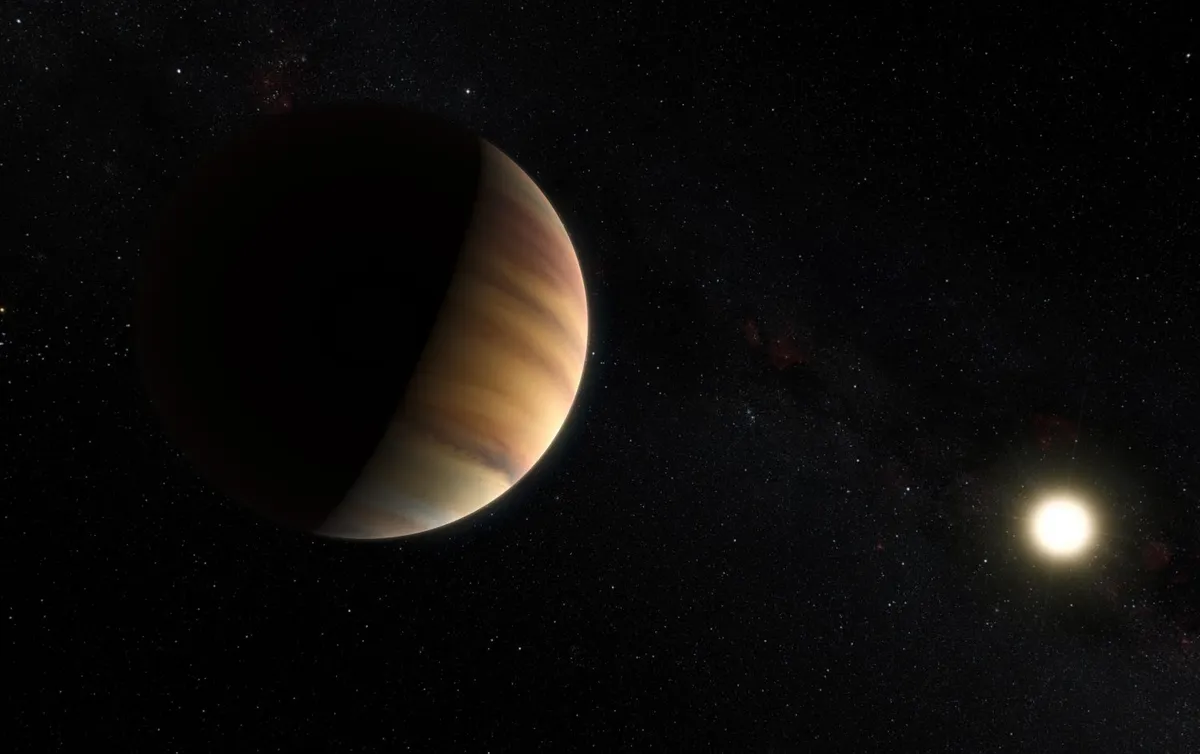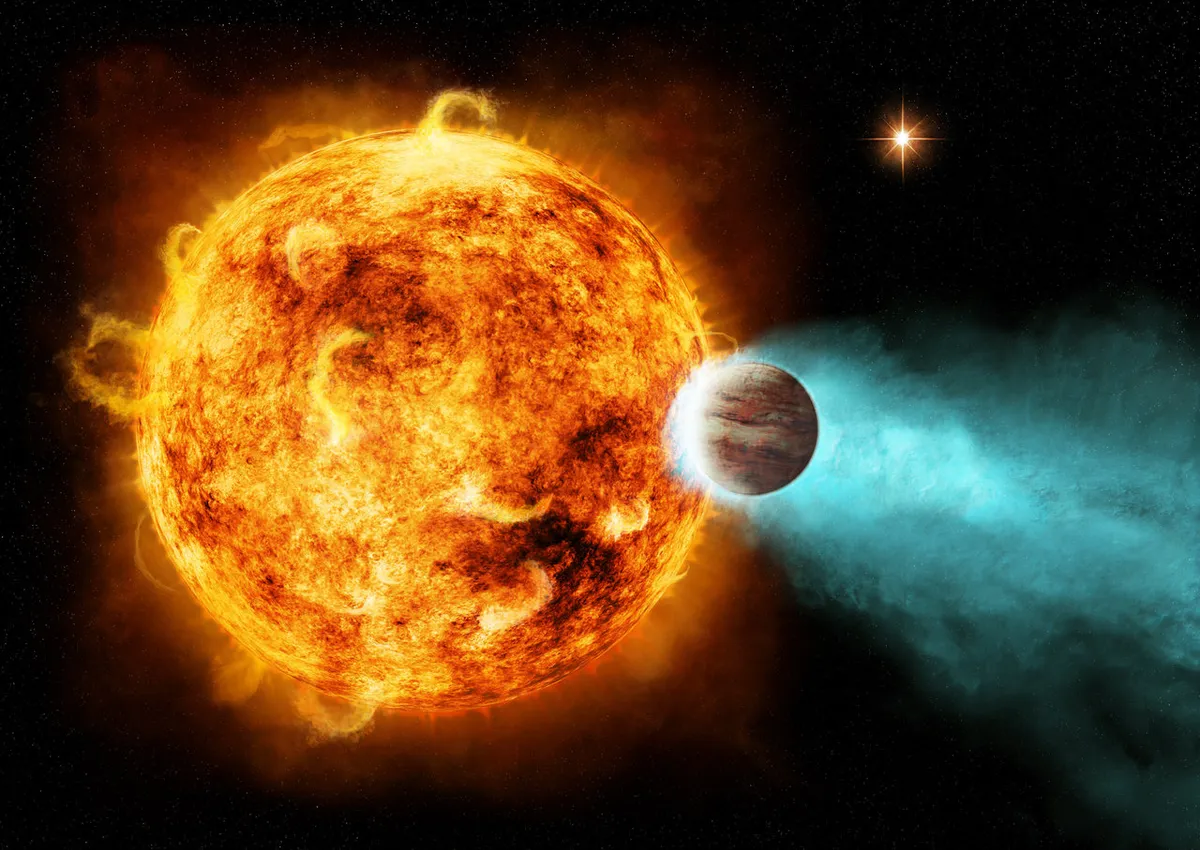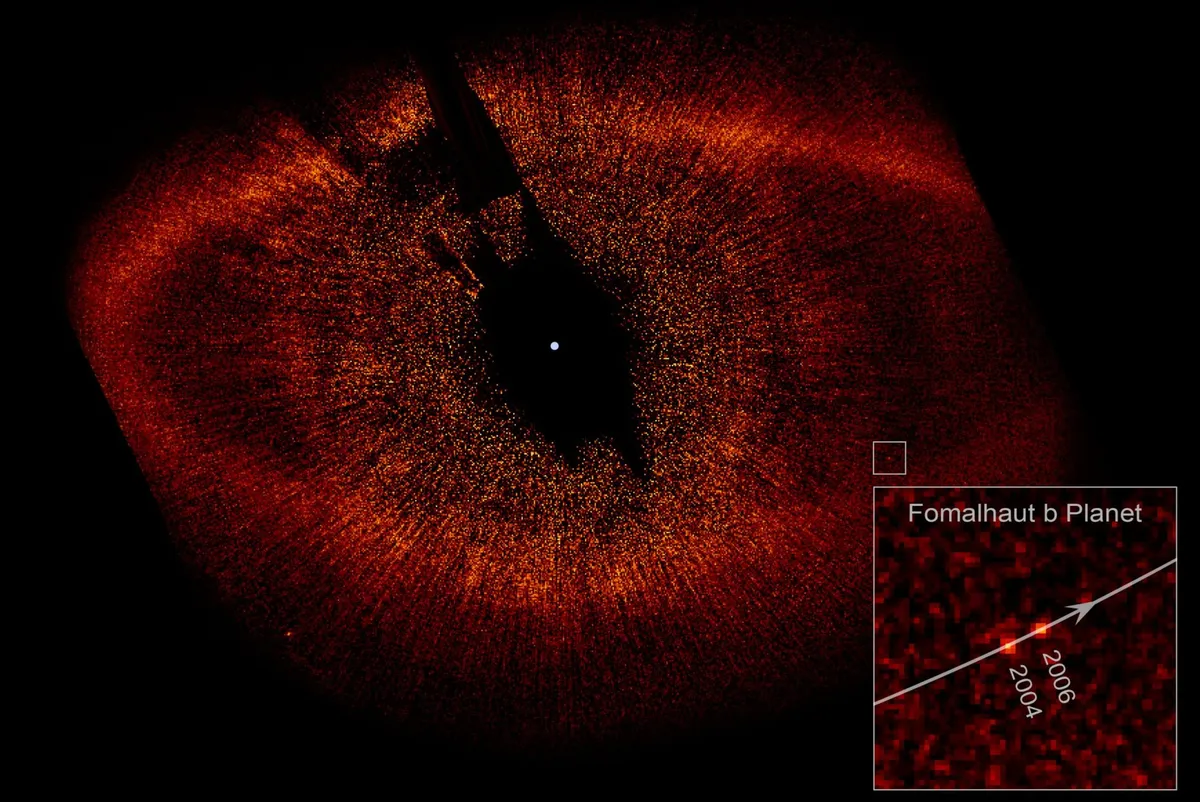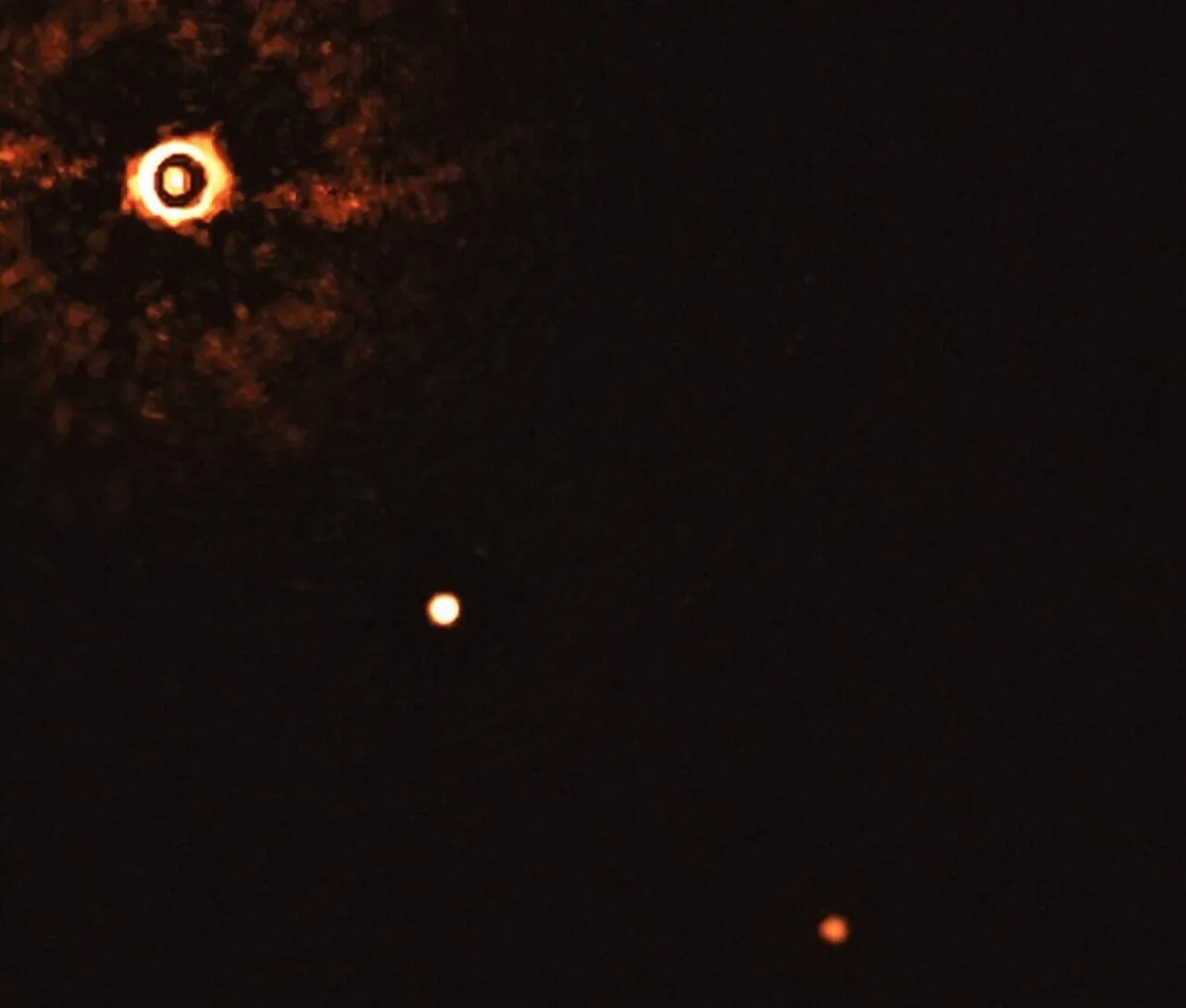The field of exoplanet study is one of the most rapidly advancing fields in astronomy, going from first confirmed discovery to the first direct images of exoplanets within less than 10 years.
Exoplanets – meaning 'extrasolar planets' – are planets that orbit stars beyond our Sun.
More on exoplanets

Up until the mid 1990s, astronomers could only hypothesise that, if there are planets around our own star, the Sun, then surely there must be planets around other stars.
Then in 1992, astronomers Aleksander Wolszczan and Dale Frail announced the discovery of two planets orbiting a distant star.
This wasn't a star like our Sun, but rather a rapidly-spinning neutron star known as a 'pulsar'.

In 1995, Michel Mayor and Didier Queloz discovered 51 Pegasi b, the first exoplanet discovered orbiting a Sun-like star.
In 2019 they shared the Nobel Prize in Physics for their discovery.
Now, astronomers have confirmed the existence of nearly 6,000 exoplanets, they've captured multiple direct images of them, and more missions are planned to continue finding and analysing them.
The field of exoplanet study has revealed there are likely planets orbiting every star we see in the night sky.
It has revealed that rocky, Earth-like planets are common across our Galaxy.

It's also revealed strange worlds, the like of which don't exist in our own Solar System, including 'hot Jupiters', which are large gas giant planets like Jupiter, but which orbit scorchingly-close to their own star.
As well as teaching us about the type of planetary systems that exist out there in the cosmos, exoplanet science teaches us a lot about our own Solar System, and how it compares to other systems throughout the Galaxy.
And the fact that astronomers have managed to capture direct images of exoplanets means we have real photos of planets orbiting stars beyond our Solar System.
A word on coronagraphs

In many of the direct images of exoplanets, you'll see a perfect black circle in the middle of the image, sometimes with a 'star' or other symbol at its centre.
This a coronagraph, which is an instrument deployed on telescopes to help astronomers better see exoplanets.
Exoplanets are many times dimmer than their host stars, so the brightness of a star can make it hard to discern a smaller, dimmer exoplanet in orbit around it.
On a sunny day you might hold up your hand to cover the Sun, and can instantly better see what's around you.
The same principle applies to coronagraphs. These instrument block out light from a star, so astronomers have a better chance of seeing exoplanets in orbit around that star.
Coronagraphs were originally deployed as a means to block out the central disc of our own Sun, so solar scientists could get a better view of things like solar flares and filaments erupting from its surface, or its 'corona'.
Despite these instruments now also being used for the purposes of exoplanet detection, the name 'coronagraph' has stuck.
You'll see many instances of coronagraph use in direct images of exoplanets.
Here are some of the best.
For info on why these exoplanets have such strange names, read our guide to exoplanet naming convention.
2M1207 b

2M1207 b was the first exoplanet to be directly imaged, and was photographed in 2004 by the Very Large Telescope at the European Southern Observatory in Chile's Atacama Desert
The image shows exoplanet 2M1207 b as a red spot orbiting the larger, blue-coloured brown dwarf, 2M1207.
2M1207 b was also the first exoplanet discovered orbiting a brown dwarf.
Astronomers say 2M1207 b is a gas giant planet like Jupiter, but 5 times more massive than Jupiter and orbiting the brown dwarf at a distance 55 times greater than Earth orbits the Sun.

This image shows exoplanet Fomalhaut b orbiting its host star, Fomalhaut, and was captured by the Hubble Space Telescope.
The Hubble image shows Fomalhaut as a tiny dot in the middle, with an inset box showing the location of exoplanet Fomalhaut b in observations captured in 2004 and 2006.
Around the star is a dusty disc measuring 34.5 billion kilometres across.
Exoplanet Fomalhaut b orbits 17 billion kilometres from its star, taking 872 Earth years to do so and carving a path through the dusty disc as it goes.
AB Aurigae b

The Hubble Space Telescope first captured a direct image of exoplanet AB Aurigae b in 2007, then it captured an image of the same exoplanet in 2021, showing astronomers how the planet had moved in its orbit around the star during that time.
AB Aurigae b is a newly-forming planet about 9 times more massive than Jupiter, and orbiting its host star at a distance of 8.6 billion miles.
51 Eridani b

In 2014, the Gemini Planet Imager camera on the Gemini Telescope captured this image of 51 Eridani b, an exoplanet about the size of Jupiter that orbits a star 96 lightyears away.
The circle in the middle of the image with a '+' symbol in the middle shows the location of the camera's coronagraph, an instrument that blocks the bright star in order that the dimmer planet can be seen.
Exoplanet 51 Eridani b is 1 million times fainter than star 51 Eridani, so the use of a coronagraph enabled astronomers to capture this direct image of it.
51 Eridani b orbits 11 billion miles from its star.
PDS-70b

This image shows an exoplanet in the process of forming around a star, and was released in 2018.
The star is dwarf star PDS 70, which is surrounded by a huge dusty disc of cosmic debris.
Dusty discs like these contain the materials leftover from the formation of the star, and are the ingredients out of which planets may form.
Exoplanet PDS 70b is the bright spot to the right of the coronagraph, and is still in the process of forming.
It was imaged here by the SPHERE instrument on ESO's Very Large Telescope.
TYC 8998-760-1 b and c

In 2020, astronomers captured the first ever image of more than one exoplanet orbiting the same Sun-like star.
Until that point, astronomers had only directly imaged one exoplanet orbiting a Sun-like star.
The star is TYC 8998-760-1, it's similar to the Sun and located just 300 lightyears away from Earth.
This image of exoplanets TYC 8998-760-1 b and c was taken using the Very Large Telescope in the Chilean Atacama desert, operated by the European Southern Observatory.

The James Webb Space Telescope captured its first ever direct image of an exoplanet in 2022.
HIP 65426 b is a gas giant planet that orbits its star 100 times farther than Earth orbits the Sun.
It's thought to be about 6–12 times the mass of Jupiter and is relatively young.
While Earth is about 4.5 billion years old, HIP 65426 b is a spritely 15–20 million years old.
HD 169142 b

This newly-formed, Jupiter-mass planet is carving out a path in the dusty disc around its host star.
A 2023 paper described the discovery of this exoplanet, known as HD 169142 b, which was discovered after astronomers observed the star system for several years using the SPHERE instrument on the Very Large Telescope.
HD 169142 b orbits its star at a distance greater than the distance between Neptune and our Sun.
The spiral formation seen in the dusty disc around the central star is being carved out as the young planet orbits around it.
Epsilon Indi Ab

The James Webb Space Telescope directly imaged this exoplanet, just 12 lightyears from Earth, and the image was released in 2024.
The exoplanet is Epsilon Indi Ab, one of the coldest exoplanets directly observed, at a freezing 2°C (35°F).
It's a 'super Jupiter', meaning it's several times the mass of Jupiter, and orbits star Epsilon Indi A, which is about the age of our Sun but slightly cooler.
HR 8799 b, c, d and e

In March 2025, astronomers released this direct image of gas giant exoplanets similar to Jupiter and Saturn orbiting a star just 130 lightyears from Earth.
HR 8799 is just 30 million years old, which means it's a young system, and as a result is still glowing hot in infrared.
The four exoplanets, HR 8799 b, c, d and e, are rich in carbon dioxide gas which, say astronomers, is strong evidence they formed in the same way Jupiter and Saturn did in our own Solar System.
What are your favourite direct images of exoplanets? Let us know by emailing contactus@skyatnightmagazine.com
